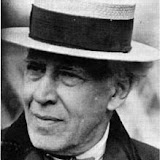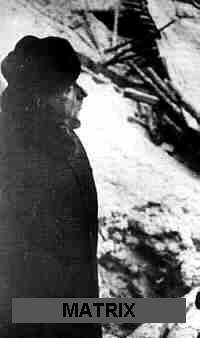...
 |
| ACTING |
 2009 LUL
2009 LUL
|
...
|
|
2004: The book is not advancing. I thought that Meyer (Meyerhold) would help me to move it, at least to a raugh draft. "M" is a difficult man -- and besides, he himself didn't write his own books. Not a single one. Maybe I got myself a wrong partner.
THR221 Intermediate Acting
|
 & thr blog
& thr blog
I suffered so much from the webmaster (long hours, 24/7 schedual, no vocations) that I feel justified to blame everything on him. The very existence of this book is his fault. I had no plans for the book, I simply use his webpages for my notes...The trick was that everything I wrote was immidiatly published and everybody in the world could read it! What I was supposed to do? To ignore them? To leave my notes unfinished? Of course, I had to go back and write more. More I wrote, more I saw what was missing...
If not for this web and internet, I wouldn't sweat so much. After all, didn't I teach before without all those webpages?
Too late. Too bad. I am trapped. I am sorry. I wrote it.
Now you have to read it.
Anatoly

Myaykovsky (Mystery-Bouffe) There are several old files I have about Biomechanics, which I combined in Introductory Pages, such as BioMX in Class or BM Overview. If you will get lost, go for Contents or FAQ pages. Also, I made a page for Instructors (Notes as well) and a page for Students. there are many "service" pages like Forum and texts, exams, quiz and etc. Of course, the last part of the book -- Monologues and Scenes will grew... And the Glossary! Above at the left top corner you can see the navigations machine: how to go from directory to another and the overall listing.
I am not a historian and "BioMX Theory for Actors" is only about the fundamentals of Biomechanics for practical uses by actors. I use some elements of BioMX in acting and directing classes and in my productions. I consider BioMX complimentary to Method Acting and I apply both, when actors need help. When they don't need it, I rather not refer to theory at all.BioMX as a style of theatre long dead, but as a training tool is very helpful. In short, this is "From Outside In" v. "From Inside to Outside" (Method). It was born as a physical theatre and every time I need visualization, I go for Biomechanics. Especially, in comedy.
There are archives of the "Twelfth Night" production @ 12night eGroup and you can see how it was applied to Shakespeare.
If you want to see how BioMX do fit into regular acting classes, take a look at online syllabus: THR121 Fundamentals of Acting, THR221 Intermediate Acting and Advanced Acting THR321.
Of course, Meyerhold is most important for directors and the last chapter is to give an overview of StageMetrics. And here I have to confess that the title "Biomechanics for Actors" is misleading: the directors should read it! There is a page Meyerhold for Directors, which will give you a better sense why I say it. He is the Director's Director!
Remember the term "theatricality"?
Historical Note:
Meyerhold and his heritage were removed from Russian Theatre during the Soviet period (1937 -- mid 70s) Social Realism was the only artistic style allowed. No Constructivism (Formalism). (see Glossary)Formalism is more known in literary theory and often is considered as a prelude to Semiotics. This artistic movement of the 1920s emphasized the formal aspect of organization of the material, ie. the idea that the form is the expression of the meaning and one doesn't exist separately from another. In short, artist must be focused on forms as the only true message. Perhaps, now you understand why the Constructivism is so closed to the School of Formalism and many consider one as a part of another.
Structuralism (theory) emphasized the organizational elements of the famous six principles in the Aristotle's Poetics. Important to notice that Structuralism moved the understanding of structure on what Aristotle defined as texture. Language or Spectacle in this view are not seen separately from the structural principles (Plot, Character, Idea). Unlike SR concept, formalists didn't believe that a thought (Marxism) could be put into existing forms (Classical Realism) and they claimed that every new idea asks for its own (new) forms.


NB. Still not sure where to place a few pages like BM and Kabuki, Commedia, Shakespeare, Moliere, Dada -- traditions or/and applications for styles? How universal is the technique? No less than the Method, I use it everywhere. We do. SNL and WRF, Sesami Street and Action-Karate movies....
Fall 2003 -- Spring 2004: 5 Approaches to Acting, David Kaplan
Part I. Task (Method)
Chapter 1. Stanislavsky
Chapter 2. Obstacles
Chapter 3. Stanislavsky's Legacy
Part II. Episodes
Chapter 4. Brecht
Chapter 5. Combining Episodes
Chapter 6. Meyerhold
Part III. Images
Chapter 7. Masks
Chapter 8. The Language of Mask
Part IV. The World of the Play
Chapter 9. Comparison
Chapter 10. Rules
Part V. Telling a Story
Chapter 11. Storytelling
Chapter 12. Dramatic Action
Chapter 13. Shakespeare
Part VI. Comparing Approaches
Chapter 14. Comparing
Chapter 15. Choosing an Approach
Chapter 16. Combining Approaches
@2000-2004 index *

Bertolt Brecht : Chaos, according to Plan (Directors in Perspective) This is the first full-length study in any language of Bertolt Brecht's day-to-day work as a theatre director. Professor Fuegi has researched his subject extensively over many years, and this book is the result of interviews with Brecht's closest associates (including Helene Weigel, Angelika Hurwicz, Elisabeth Hauptmann and Hans Bunge), inspection of the unpublished typescripts recording several years of Brecht rehearsals at the Berlin Ensemble, and consultation of archival materials in Moscow, Berlin and Harvard University. Although Brecht is acknowledged worldwide as having changed our whole conception of playwriting, acting and directing, virtually nothing has been previously published which tells how he worked and reacted with actors, and how his productions were actually put together in rehearsal. John Fuegi now tells the story, evoking the excitement and controversy which surrounded Brecht's work on the stage. He examines the way Brecht applied his manic but brilliant character, in both personal and professional life (though these cannot easily be separated), in order to create the tension and confusion, contradiction and chaos, from which his best productions emerged. He shows how the plays must be seen in the light of their evolution on the stage through innumerable arduous rehearsals, themselves conditioned by the intense magnetism, spontaneity and unpredictability of Brecht's personality. Most importantly, the book charts the evolution of Brecht's own dramatic theory from his early rejection of Stanislavskian realism and his demands for emotional coolness from the spectator to his later acceptance of the power of theatre to involve, even to move, the audience. The book goes behind the scenes to look at the playwright's negotiation of contracts for his productions, commercial agreements which were often highly beneficial to himself but markedly less so to his collaborators such as Kurt Weill, Ruth Berlau and Elisabeth Hauptmann, and it talks frankly of Brecht's use of the 'casting couch', bestowing and withholding favours with the same volatility that characterized his remarkable love-life. The story is accompanied by illustrations, many of which have not been published before. It provides a much-needed antidote to some of the more sterile accounts of Brechtian theory, concentrating very much on the 'practice' but remaining at the same time vividly aware of the social and political context in which and about which Brecht was writing. The book will be of interest to scholars and students of theatre and of dramatic and comparative literature, and it is presented in a lively style that should also appeal to the general reader. Re:Direction: A Theoretical and Practical Guide (Worlds of Performance) This generous collection of interviews, commentary, and manifestos is drawn largely from past issues of The Drama Review (TDR), the premier journal of performance theory, from as far back as the 1960s. To fill some gaps, three pieces are drawn from other sources. The collection's four sections are arranged to reflect the development of performance theory over time. The tone of these four sections varies from considered academic questions to enthusiastic declamation. "Classical Revolt" centers on the Moscow Arts Theatre, Bertolt Brecht, the Living Theatre, and Augusto Boal. "Auteur Theatre" is extremely diverse, covering Antonin Artaud, Robert Wilson, Richard Foreman, Pina Bausch, and others. "Community and Trasculturation" includes Jerzy Grotowski, Peter Brook, and Ariane Mnouchkine. The last section, "Montage, Reiteration, Revision," addresses Sergei Eisenstein, the Wooster Group, Heiner Miller, and others. The collection's appeal will vary according to the reader's familiarity with the ideas presented or enthusiasm for a particular pet theory. In such a book there are always missing figures, and here one regrets the absence of Anne Bogart and Tadashi Suzuki. Nevertheless, this wide-ranging survey is a valuable resource for theater practitioners and academics.
More and more I use film terminology in BM class; simple as CU and MS frame -- or more complex, like line of action, axis of tention.
Consider the following moment from Mayakovsky’s revolutionary play Mystery Bouffe written 1917 and famously directed by Meyerhold in 1921:
Today
over the dust of theatres
our motto shall light up:
"Everything anew!"
Stand and wonder!
And "Meyerhold had the actors (in his play) tear posters from Petrograd theatres to shreds"...








An online course supplement *
2005-2006 Theatre UAF Season: Four Farces + One Funeral & Godot'06
Film-North * Anatoly Antohin * eCitations *
Acting amazon
